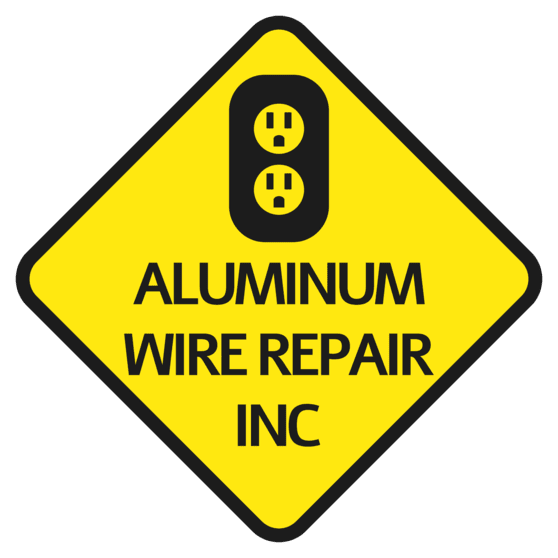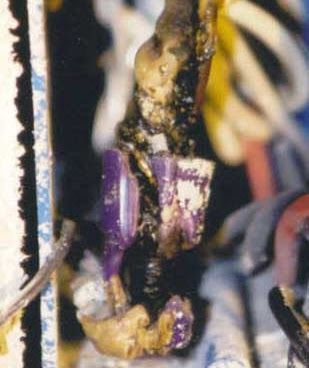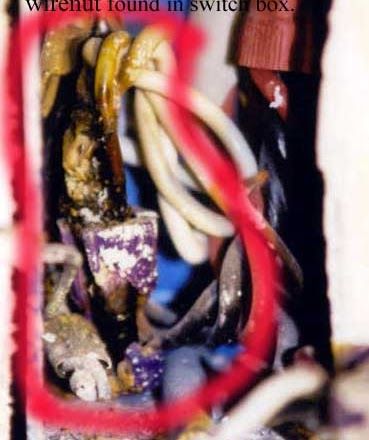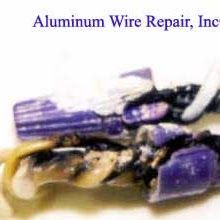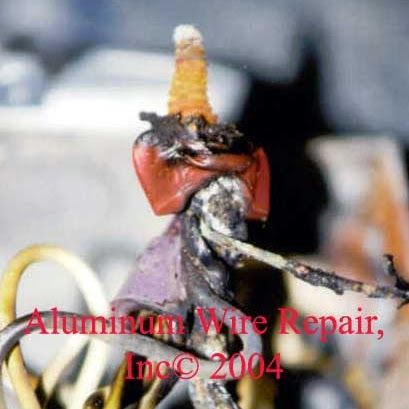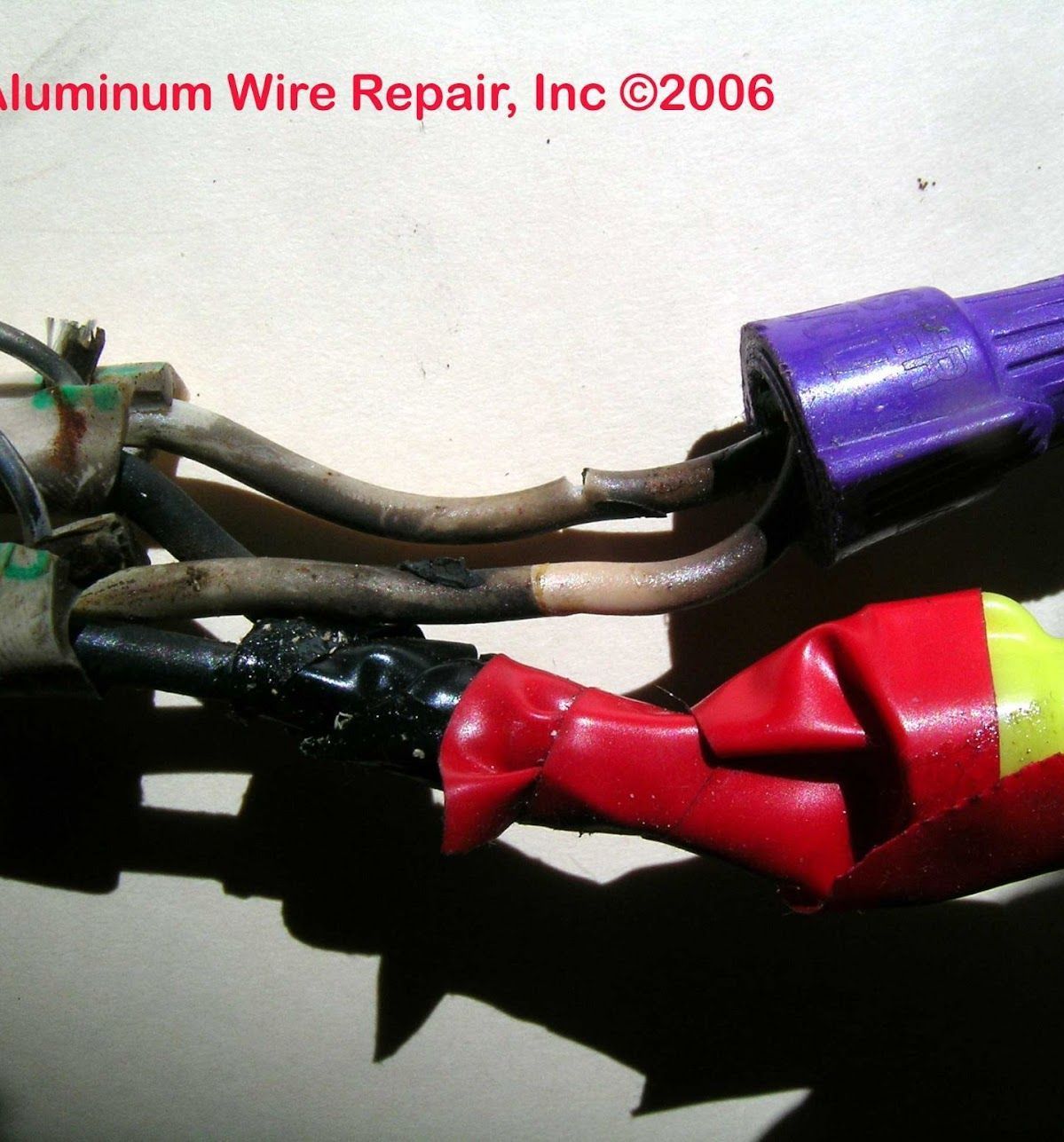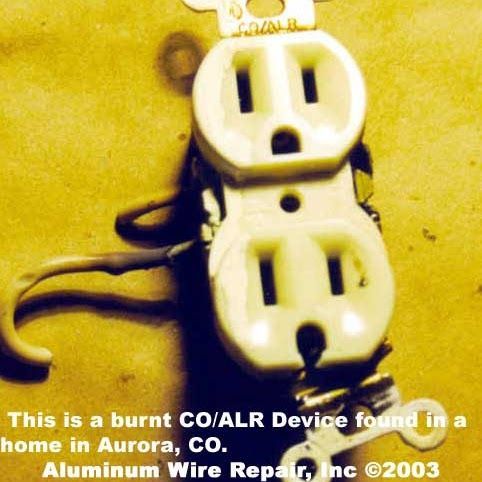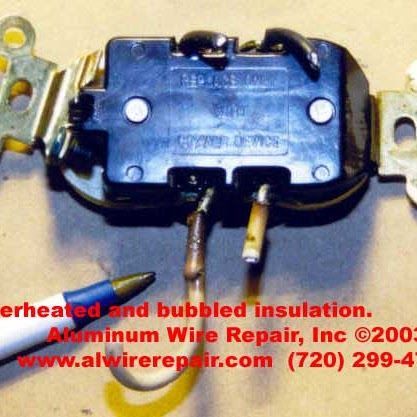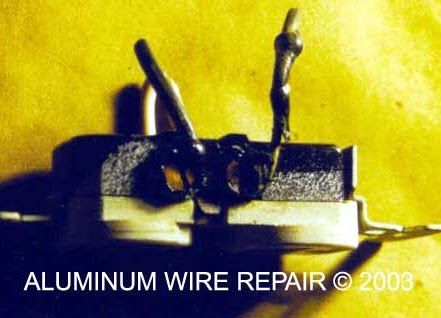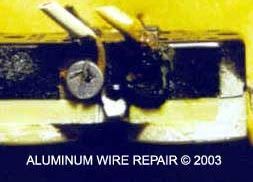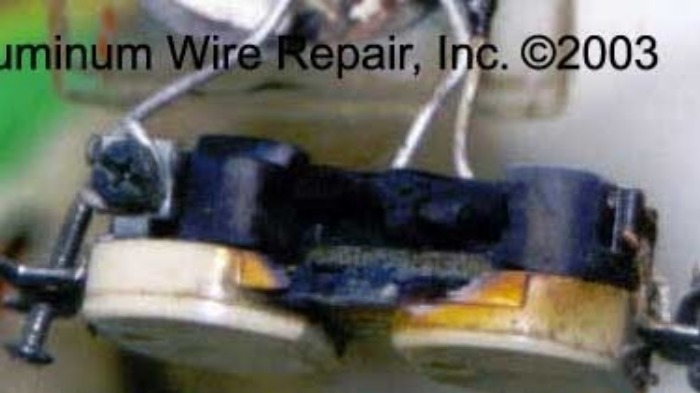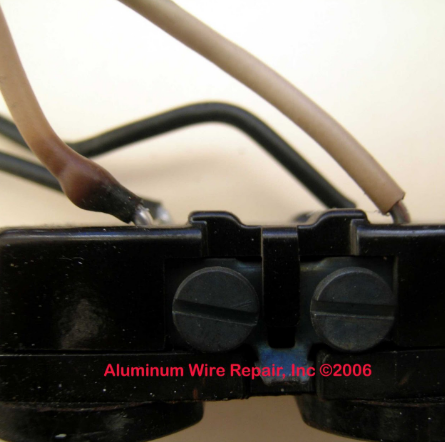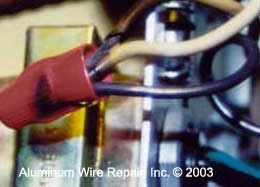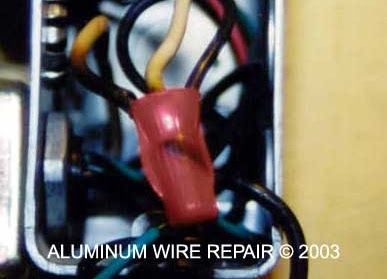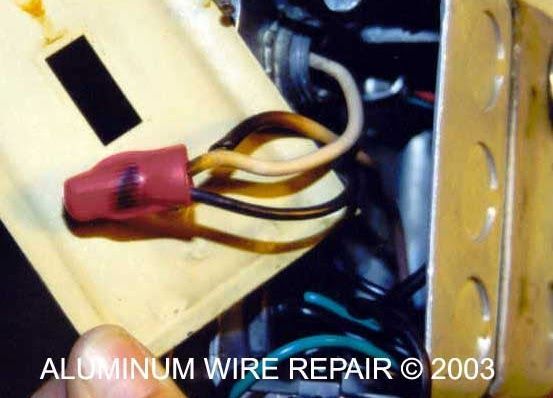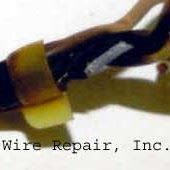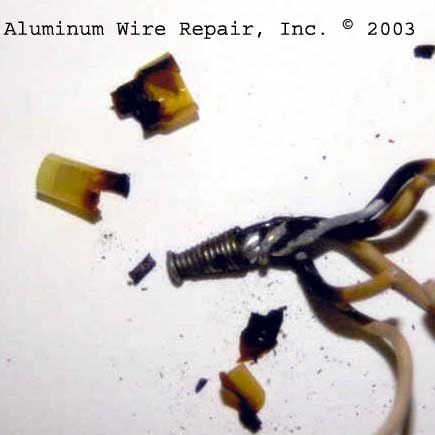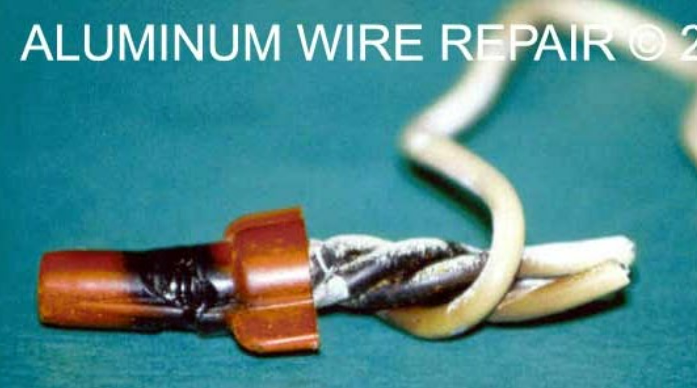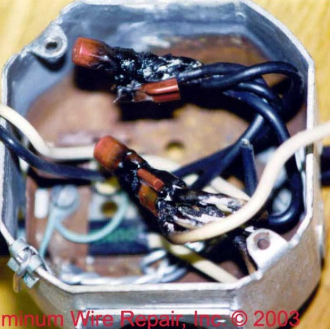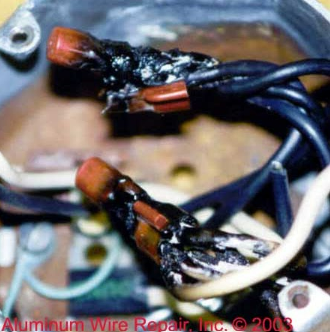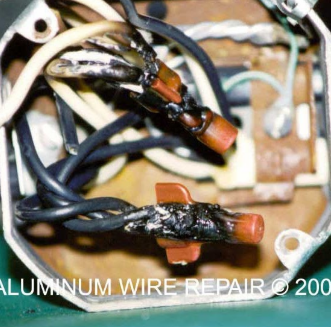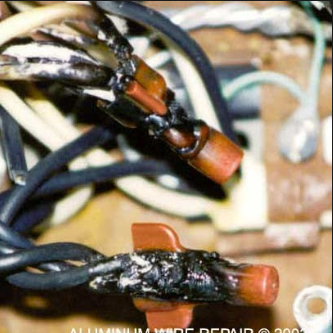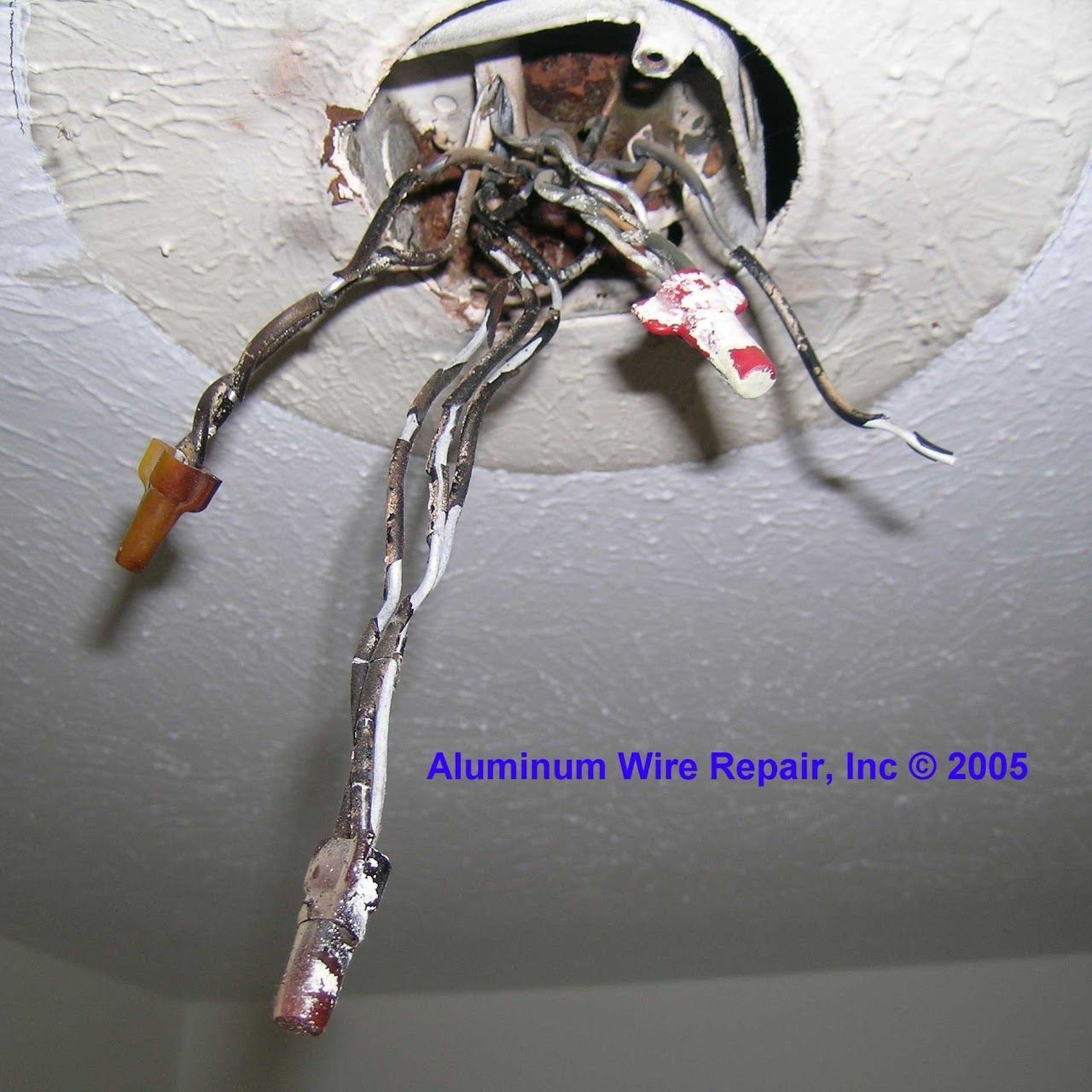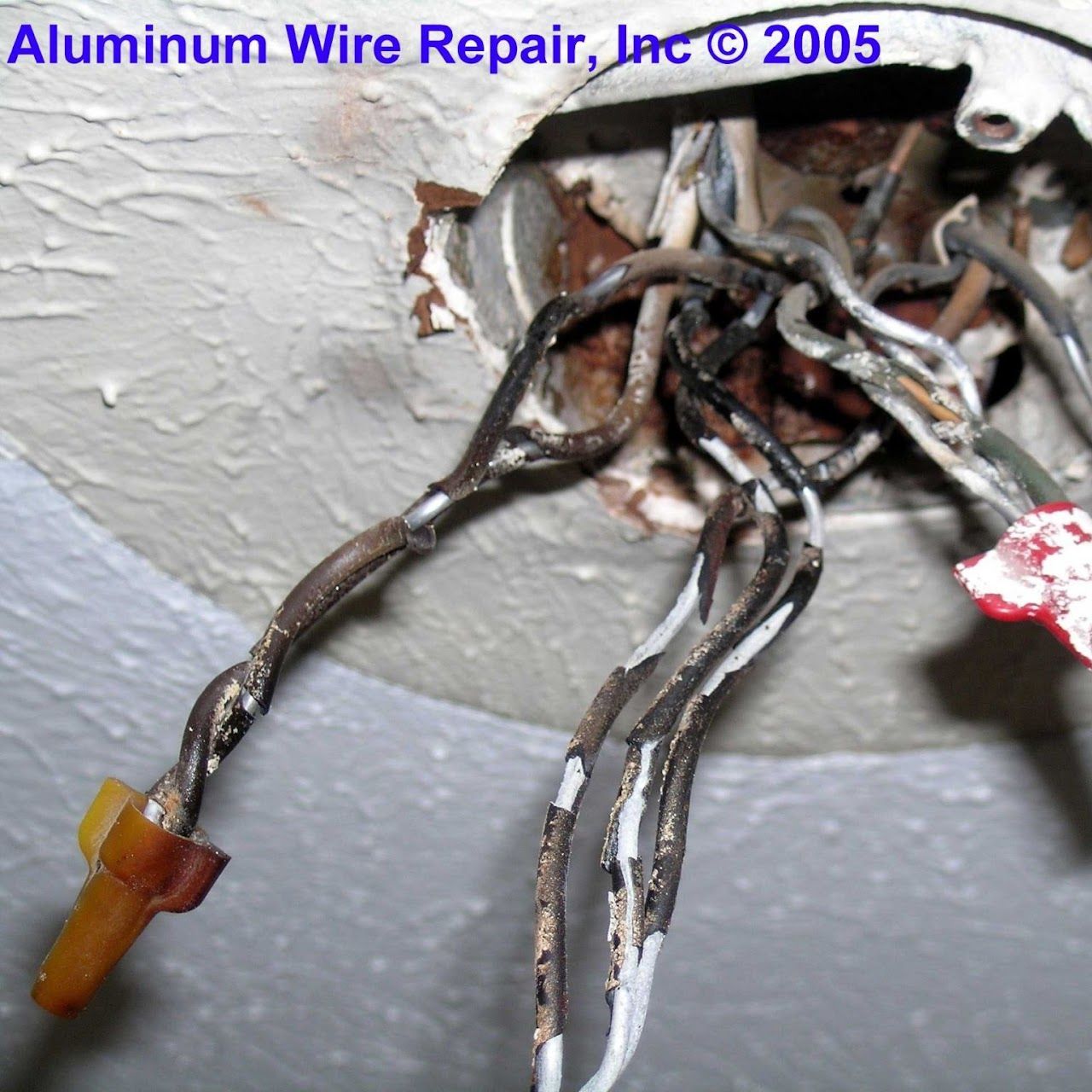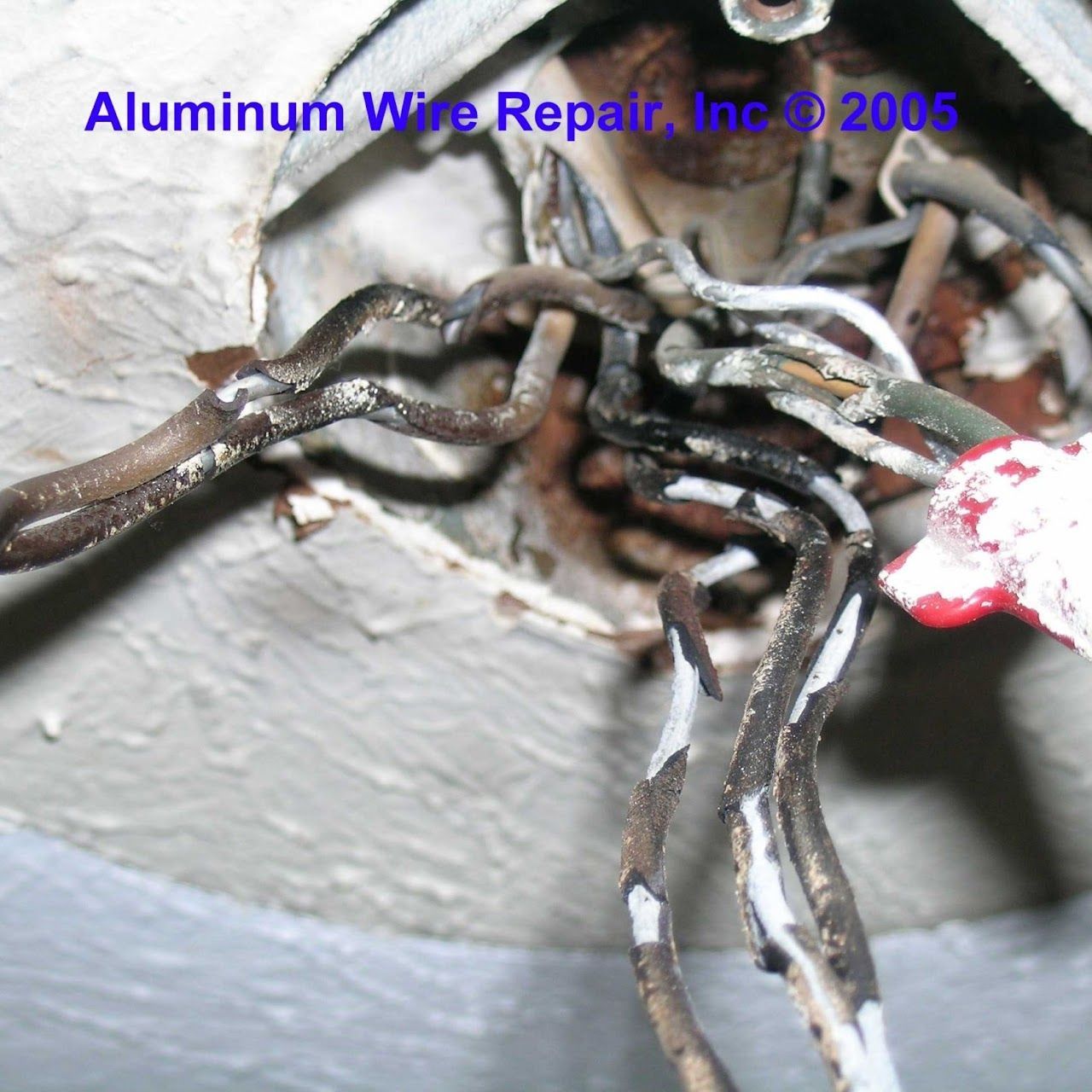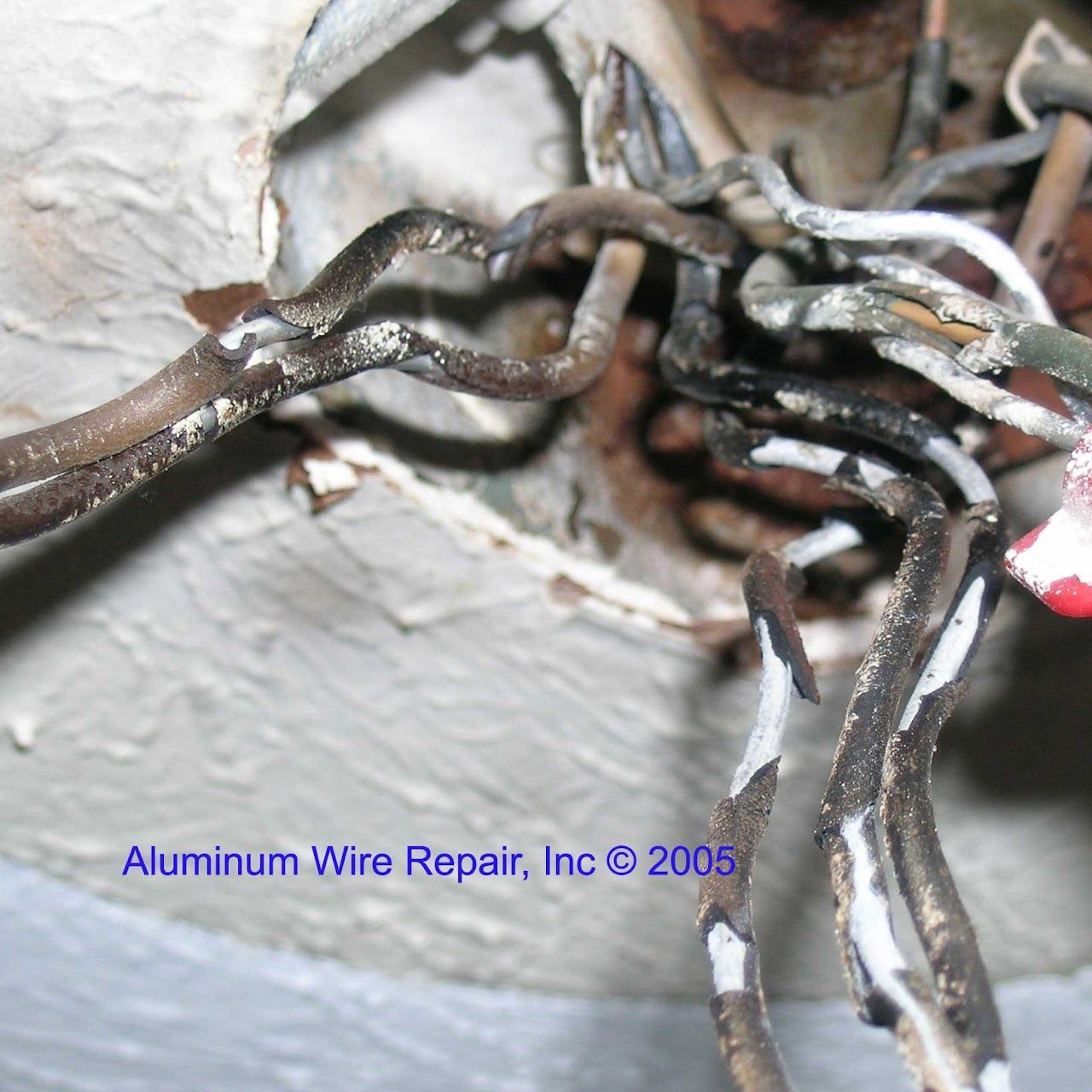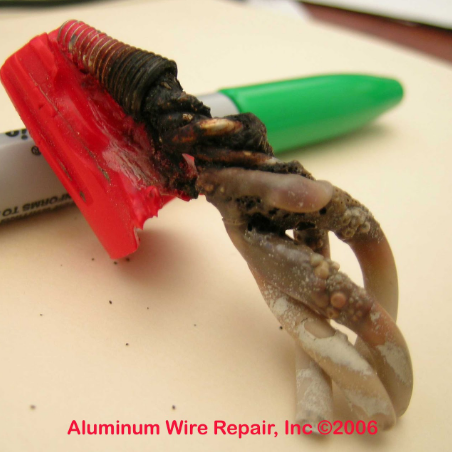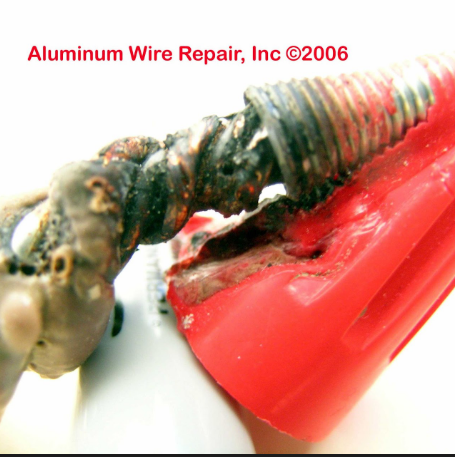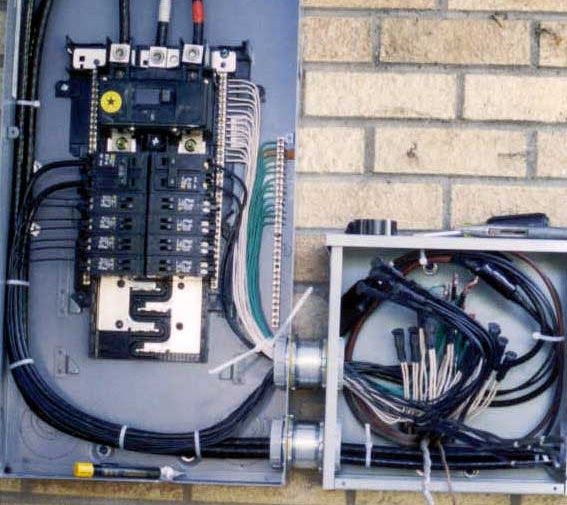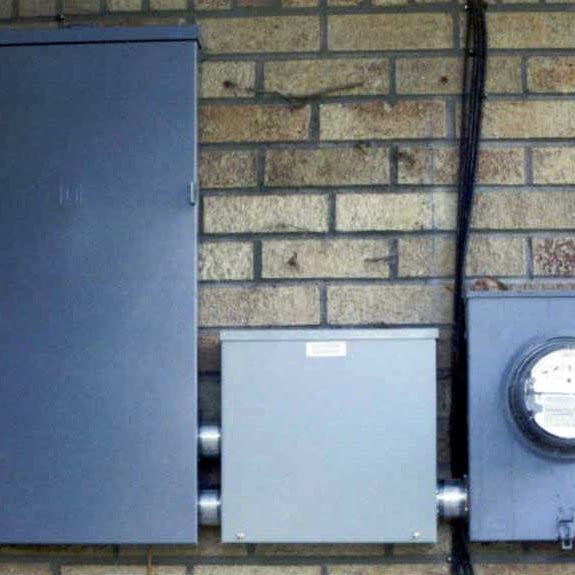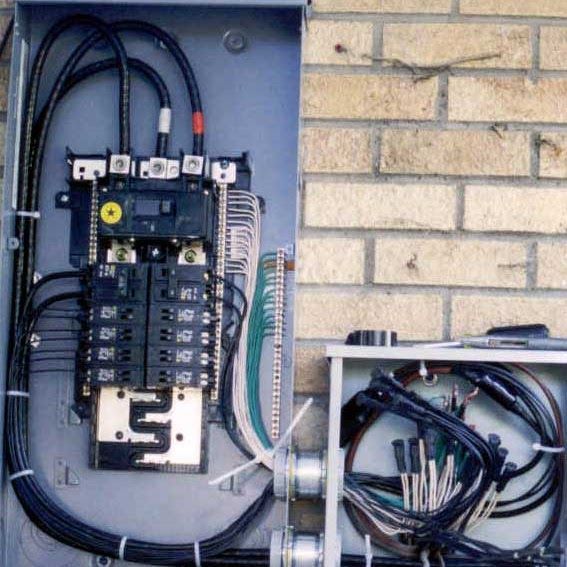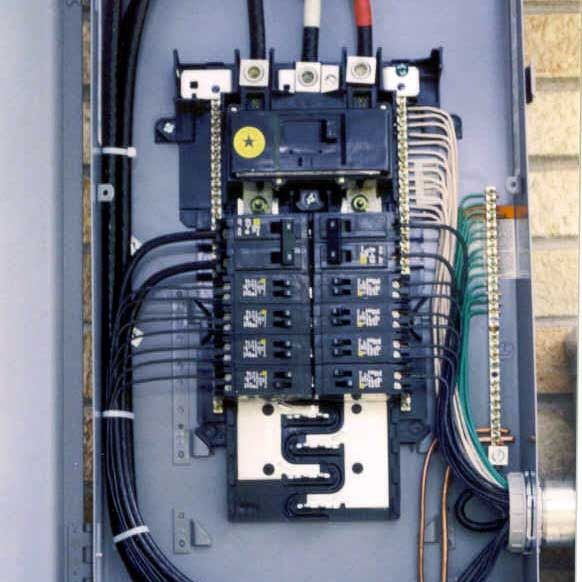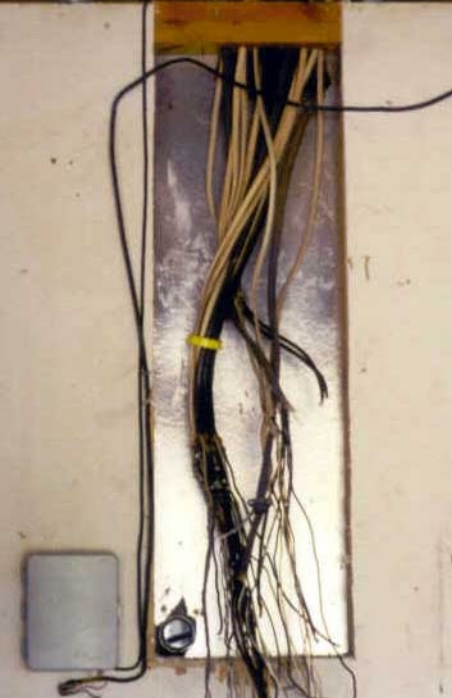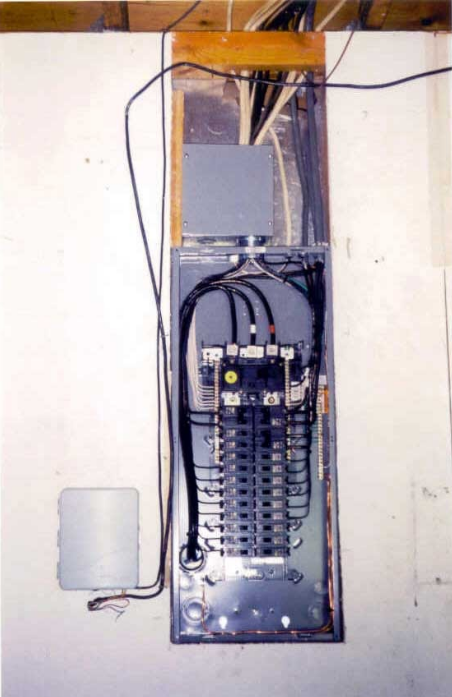Completed Aluminum Wire Repairs
Burned Purple Wirenuts Found in the Field
Burned Purple (Ideal #65) Wirenuts found in the field
CAUTION: Many electricians, who are not COPALUM certified, recommend other repair methods. While these repair methods are less expensive than COPALUM crimp connectors, we agree with the CPSC that these repairs are considered unacceptable and “do not solve the problem of overheating present in aluminum branch circuits.”
‘Pigtailing With the Purples”
"Pigtailing," the most common and unacceptable fix, involves connecting a short copper wire to the aluminum wire with a twist-on connector, which is also known as a wire nut (IDEAL Purple #65). The copper wire is then connected to the switch, wall outlet, or other termination device. The Commission staff has evaluated the effectiveness of “pigtailing” as a repair. In CPSC-sponsored laboratory testing, some brands of twist-on connectors have performed very poorly. From what we saw in the field, we agree with the Commission staff and the results of the lab tests that this repair method does not solve the problem of aluminum branch circuits getting too hot.
At best we consider the proper application of Purple Wirenuts a temporary repair. However, this wirenut is filled with a flammable oxide inhibitor, and the manufacturer has stated that it is NOT INTENDED FOR A COMPLETE HOME RETROFIT. Until aluminum wiring undergoes permanent repair through re-wiring or COPALUM, we recommend leaving it undisturbed.
These pictures of a switch box found in a master bedroom in the Southmoor section of Denver in July 2004 clearly show a burned Purple Wirenut on the neutral wires. The wirenut contained 3 aluminum and 1 copper wire, and it operated a bath light that was working fine and not flickering.
Burnt Devices Found in Homes
This burned aluminum wired outlet was found in a home in Aurora, CO, in May 2005 after the fire department had been called in to respond to the sparks and flames. Luckily, the homeowner was home and noticed the smell before the fire could spread. Unfortunately, the fire department shut off the wrong breaker, and this outlet was still hot when we came in to inspect and repair it.
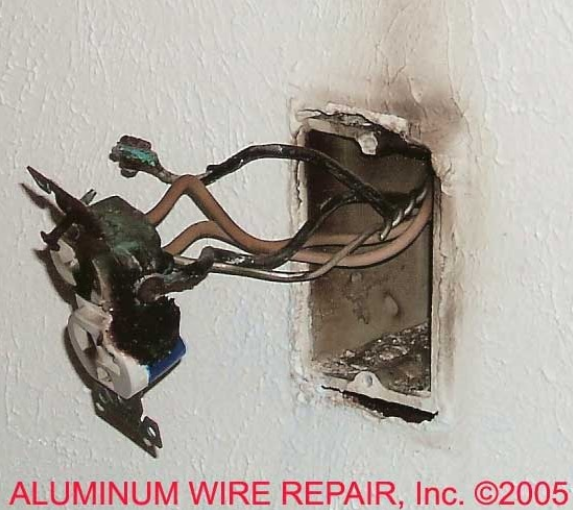
This Doesn't Work
Replacing with CO/ALR devices is a temporary repair at best. The photos below show a CO/ALR (aluminum-compatible device) that was anti-oxidized but still shows significant signs of overheating in the insulation. We believe these circuits were heavily used and had problems in the past, causing a previous homeowner to change the receptacles out; this was the result behind the wall years later. The aluminum wire connections can still loosen up and cause problems
In these pictures, taken from a home in Aurora, you can see that all the insulation was burned clear off the wires, and the receptacle is just about halfway burned through! The electrical shaver was still operating on this outlet, which showed no signs of damage. The situation was extremely dangerous, and the homeowners are fortunate that there was no combustible material inside the electrical box.
This was a backstabbed device found in a home in Boulder, CO, in January 2006. This is a side view of a “back-stabbed” aluminum wire that shows obvious signs of bubbled and overheated insulation. We find very little “backstabbed” aluminum wire because it simply does not hold up over time. Backstabbing means that instead of wrapping the wire around the device screw clearly visible in the picture, the wire is simply inserted into a hole in the back of the device.
Examples of Burnt Wire Nuts
This series of pictures clearly shows why normal “pigtailing” with wire nuts is not considered an acceptable repair. “Pigtailing” consists of attaching a short piece of copper wire to the aluminum wire with a twist-on connector often called a wire nut.

In January of 2003, we found this wire nut in a home in Aurora, CO. Overheating is clearly evident in the discoloration band around the shell. This is a characteristic overheating pattern for failing aluminum wire twist-on splices. With time, further degradation occurs, and fire hazards do exist with current loading.
Certain properties of aluminum can cause deterioration of connections, possibly presenting a fire hazard after years of service.
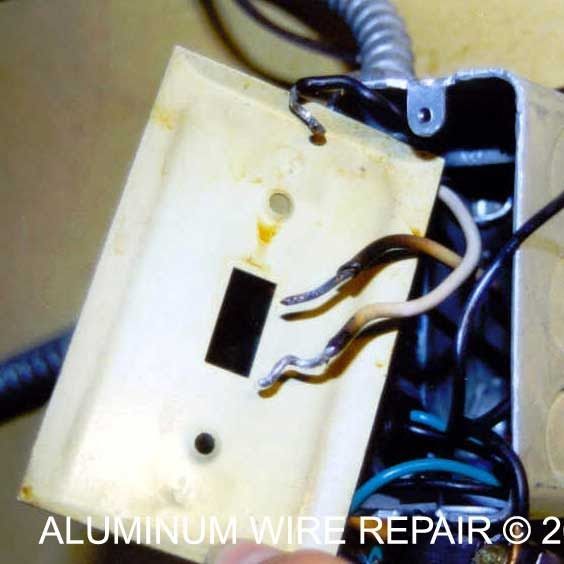
This wirenut contained aluminum and copper wires and shattered the moment it was removed from the circuit, which, by the way, was still electrically functional. It proves just because the lights are on does not mean you may not have a grave condition.
Notice the characteristic overheating band has actually burned through the shell of the wirenut and the spring, and the damage to the wires is quite visible.
These two pictures were taken from a master bathroom light fixture in Littleton, CO, in June 2003; the light was still working fine, and no breakers had tripped!
These pictures are from a light/junction box found in a basement in Littleton, CO, in June 2003. The wirenuts are way beyond the characteristic heat band and have melted and deformed. Also notice the heat damage to the bottom of the junction box and, of course, the exposed and damaged wires—both on the hot and neutral wires. We replaced the entire box after COPALUM. We crimped fresh copper wire to repairable aluminum wire. This light was still working, and the homeowners said no breakers had tripped. This connection is truly frightening!
Picture of an overheated wirenut showing heat damage at the spring again found in a splice box in Arvada, CO
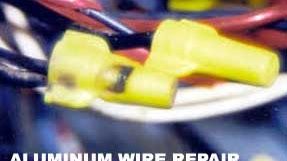
These pictures are of a working light in a laundry room in a home in the Southmoor Park neighborhood of Denver. They were taken in March of 2005. The object was a working, non-flickering light that provided no indication of the severely burned wires contained in the steel electrical box. You can also notice the significant heat damage to the electrical box.
These pictures are from a working light with not so much as a flicker in the main kitchen light we found in a townhome in Boulder, CO, in November 2005. As demonstrated by the enlarged photos above, the heat of the wirenut spring actually melted right through the plastic wirenut. This connection was glowing in the electrical box every time this light was on.
This twist-on connector (wirenut) containing all aluminum neutral wires was found burned up in a junction box in a home in Colorado Springs, CO, in February 2006. An intriguing situation occurred due to this burn. When one of these neutrals burned out of the mix (the one heading back to the panel) and a switched outlet was powered, the receptacle wound up with 220V instead of 110V, causing a loud pop and smoke to billow from a television that now needs to be replaced.
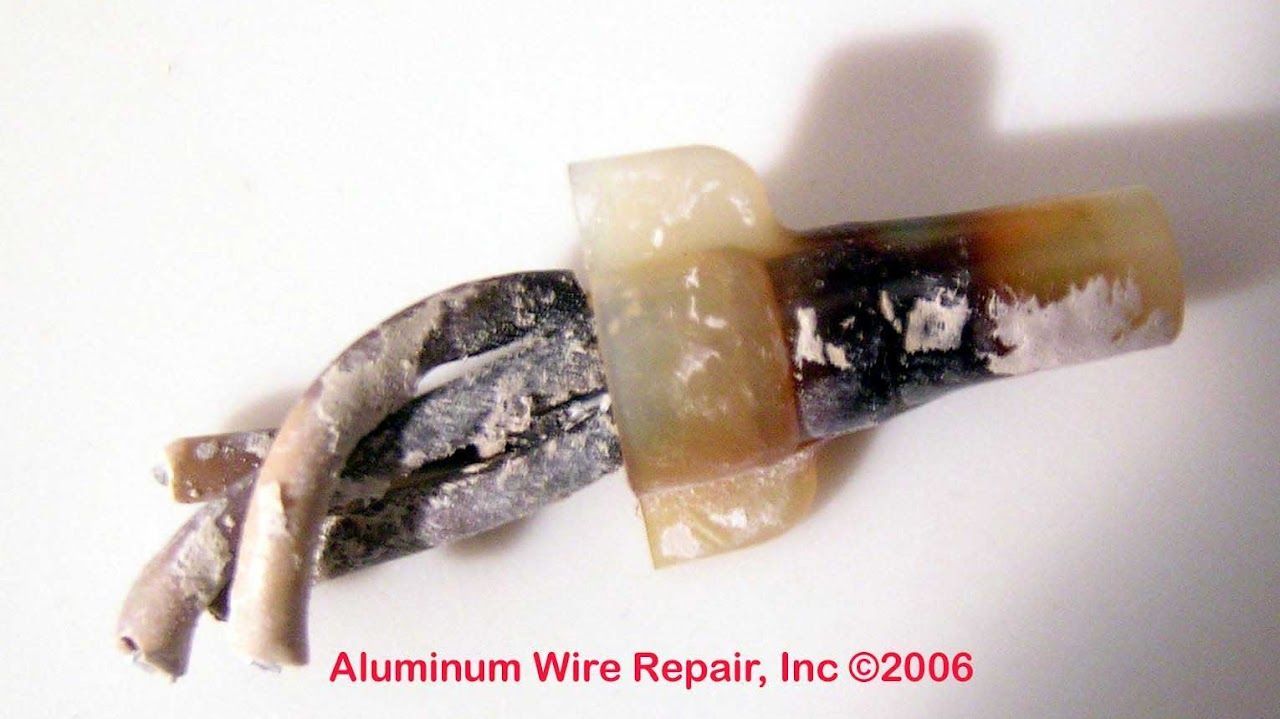
Examples of Aluminum Wiring
At outlets and switches, look at stripped wire ends. Oftentimes, simply removing the cover plate will give a sufficient view. Be especially cautious if you see back-wired receptacles. It may be difficult to see if the wire is aluminum, but if it is, the smaller wire contact surface when this method was used may increase the risk of overheating or other failures.
It is sometimes easiest to look at the wire at circuit breakers in the electric panel for aluminum wire.

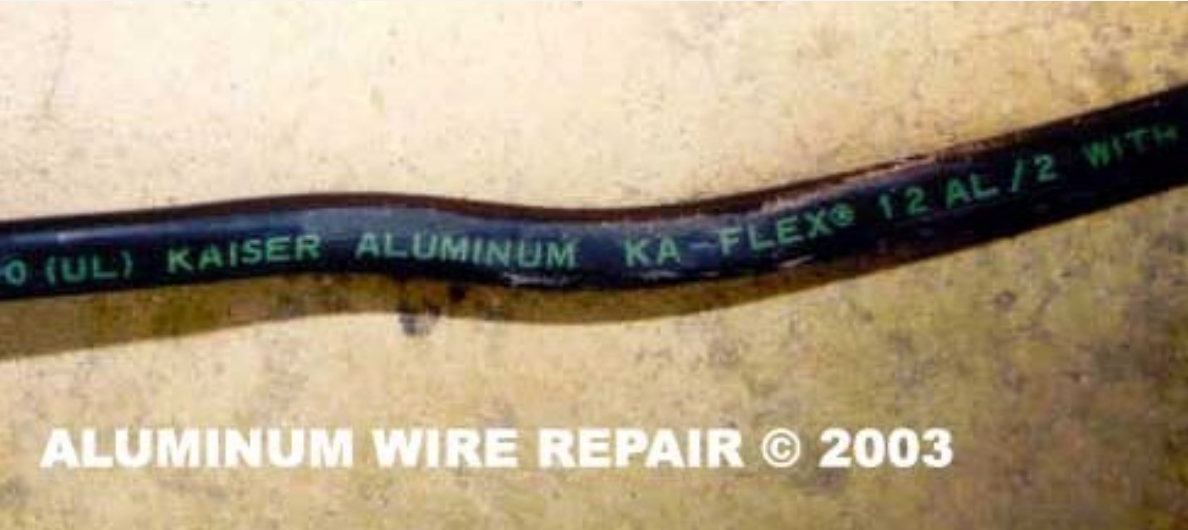
Look for the word “Aluminum.” (See Figure 2). Look for printed or embossed letters on the plastic wire jacket where wiring is visible or at the electric panel. Some aluminum wire has the word “Aluminum” or a specific brand name such as “Kaiser Aluminum” plainly marked every few feet on the plastic wire jacket. This photo shows a dark-colored wire jacket with green print indicating “Kaiser Aluminum.” Some white-colored plastic wire jackets feature red or green ink, while others feature unreadable embossed letters. Try shining a light along the wire.
Service Panels and Splice Boxes
New 200 amp outdoor service panel with COPALUM splice box (mounted between the new panel and the meter housing). All the existing aluminum is removed from the main service panel, and COPALUM is crimped to fresh copper. Then only the new copper is brought back into the service panel.
Here are pictures of a new 150 amp panel and COPALUM splice box installation (on the top left of the new panel) inside of a garage in Centennial, CO, in July 2004.
Transform Your Home or Real Estate Transaction With Expert Aluminum Wiring Repairs!
Explore our gallery to see the quality craftsmanship we bring to every project in older homes. Ready for a safer, more efficient home upgrade? Call us now at (303) 619-7667, and let’s get started!
